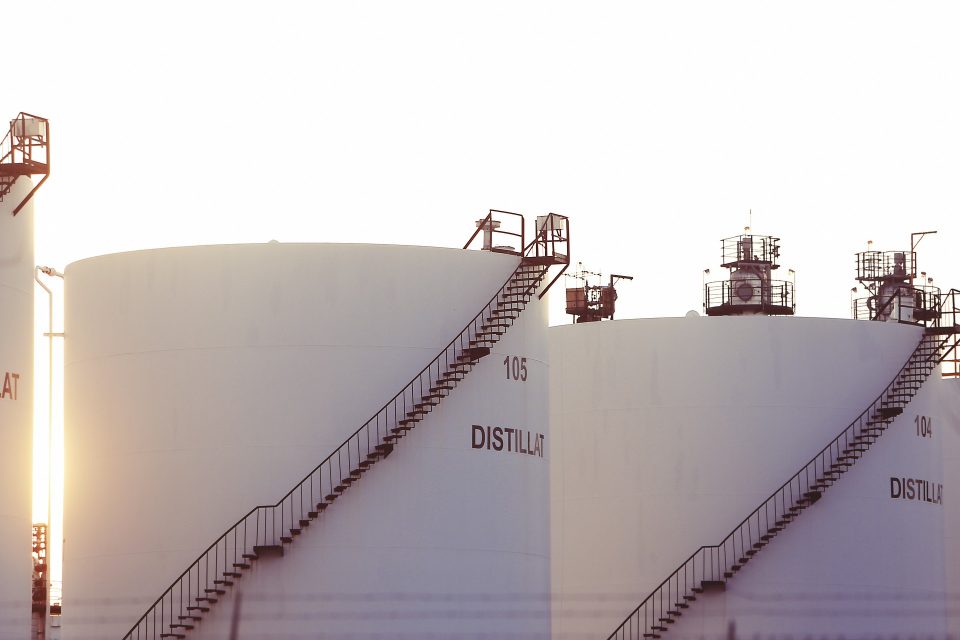
What Is Distilled Water
Walking down the water aisle in the grocery store, there are hundreds of selections. “pure water,” “spring water,” and “pH-balanced water” are just a few of the available options. Sitting below all of these, usually existing as one of the cheapest selections, lies distilled water. Today, let’s take a look at this humble type of H2O and better understand: what is distilled water?
Chemistry of Distilled Water
First, let’s dive into the chemical and theoretical definitions of distilled water. This will help us to better understand how to make this water. And, it will allow us to examine several practical uses.
Molecular Structure of Distilled Water
Distilled water is still water. The basic molecular formula and structure is the same for all different types of water. Let’s remember back to chemistry class in high school. Water is simply an oxygen atom bonded to two hydrogen atoms. See below.

Image from AbdullahAlturki99 via Wikipedia
Hard Water vs. Soft Water
Most modern houses contain a “water softener.” What exactly does this contraption do? Water softeners function to take “hard water”, water with dissolved minerals and salts, and turn it into “soft water,” or water with fewer minerals and salts. The exact levels of “soft” and “hard” water are relative. They somewhat depend on the machine and personal taste. In the United States, our water softeners work primarily to remove magnesium and calcium from drinking water.
What About Purified Water?
This one can be a little tricky. Distilled water is, by definition, purified H2O. The opposite is not true, though. Generally, water purification is a process that removes all “impurities” from the water. The definition of “impurities” is what can make this differ from distilled water. Bottled water from the store and tap water run through a filter, like a Brita filter, have been purified to remove any harmful impurities like bacteria, viruses, or any other pathogens.
Distilled Water
This brings us to our final definition. According to Merriam-Webster, distilled water is “water that has been freed of dissolved or suspended solids and from organisms by distillation.” Thus, distilled water is not the same thing as purified water. Also, is it not the same thing as soft water.
Distilled Water Is Safe
A myth that has been perpetuated by filter companies is that distilled water is “dangerous” to drink. The logic goes that because the water contains no dissolved solutes (particles like salts, sodium, magnesium, etc.) it is dangerous to your body because it can “leech” the nutrients from your cells. This actually could not be further from the truth. Distilled water is absolutely safe to drink. There is no significant evidence to suggest that it will deprive your body of valuable nutrients. Additionally, there is no significant evidence to suggest that drinking distilled water is dangerous in the long run.
Image by kboyd via Pixabay
How to Make Distilled Water
Now that we know what this water is, how exactly do we go about making it? First, distilled H2O is easily purchased at a grocery store. For this reason, we would not suggest attempting to make your own. But, the process that water producers follow to make distilled water is quite interesting.
Distillation, as a concept, is simply purification via heating and cooling. This same process (on a larger scale) is used in many industrial applications. Examples include oil and petroleum refining.
Water distillation is rather simple.
- First, take water in liquid form.
- Next, heat it to turn into water vapor (a gas).
- Last, condense that gas back into liquid water.
During this process, the elimination of impurities occurs. As the water evaporates into steam, this process leaves out any dissolved impurities. The condensed water collects into a separate vessel. This vessel now contains pure, distilled water.
Uses of Distilled Water
This type of water is a common reagent in many processes. Let’s take a look at some of the most useful applications of this useful compound.

Image from RitaE via Pixabay
Steam Irons
Whether used in a home application, at a local laundromat, or in an industrial cleaning sphere, irons almost always use distilled water. The chemistry of this makes sense in the context of distilled water creation. Irons utilize the steam that is created to press irregularities and wrinkles out of clothing. If the water contained dissolved salts or other solutes, these would end up staining the clothing.

Image from Free-Photos via Pixabay
Aquariums
For non-saltwater aquariums, distilled water is a common base to start with. Fish owners can then adjust the pH, concentration, and other variables in the tank. This allows fish owners to replicate the native conditions of their fish as closely as possible.
Science
For closely controlled and monitored scientific experiments, anything less than distilled water won’t do. This is because the presence of certain minerals or solutes can affect results in unpredictable ways. Distilled water is the starting point for almost every chemical reaction, from applications like PCR to cell culture to gel electrophoresis.
[Featured image by Life-Of-Pix via Pixabay.]
Check us out on EarthSnap, a free app brought to you by Eric Ralls and Earth.com.













